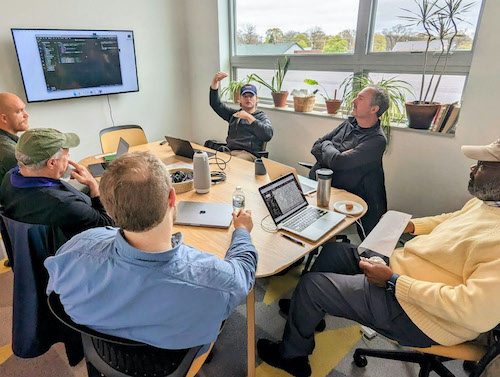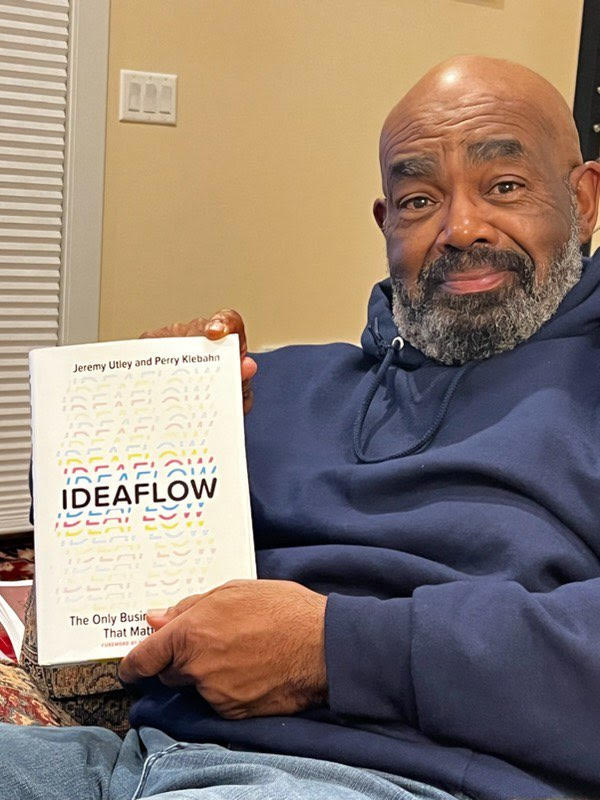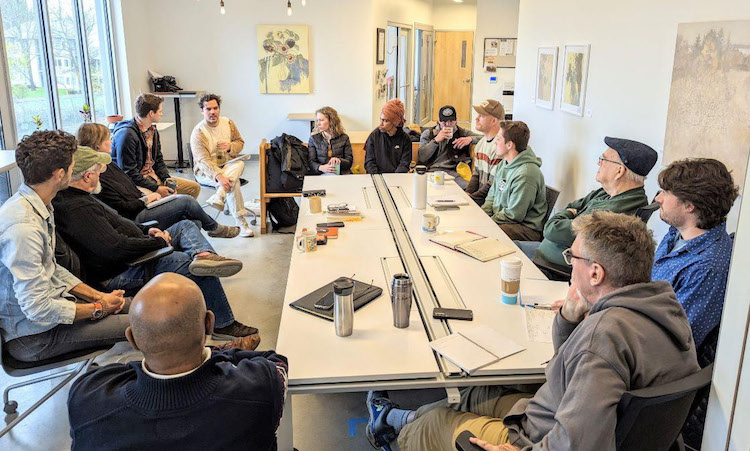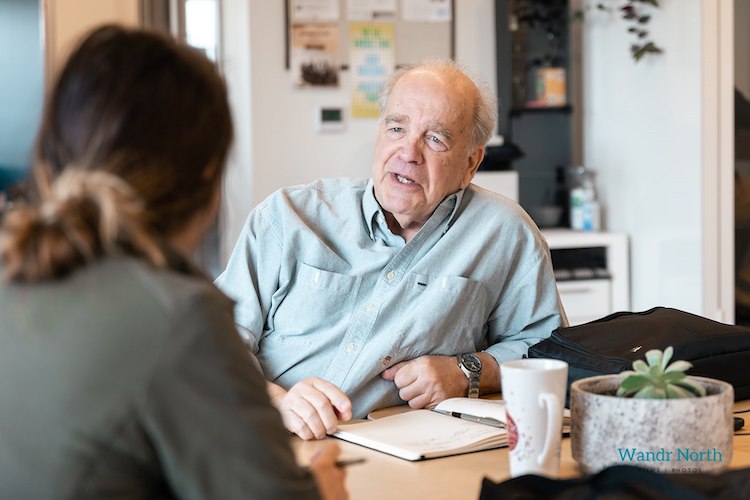
What We Do
The OOPs Experience
 Instead of having a highly structured committee which formally vets ideas, the OOPs process is organic, operating with flexibility and urgency to help organizations, entrepreneurs, or anyone with an idea curate, refine, and prioritize ideas, technologies, and challenges.
Instead of having a highly structured committee which formally vets ideas, the OOPs process is organic, operating with flexibility and urgency to help organizations, entrepreneurs, or anyone with an idea curate, refine, and prioritize ideas, technologies, and challenges.
We do not require business plans, marketing strategies, or pitch presentations.
Come see us, explain your idea, get feedback, and we will get you connected to the appropriate resources to help you or we will find connections for you to continue your journey. We also don’t mind if you stay with us and continue to participate in OOPs!
The OOPs Process
 Contact the OOPs co-directors, Will Kitchen and Steve Rice at oops@nmc.edu. Tell us a little about yourself and your idea or requests for assistance on an idea, company, or project.
Contact the OOPs co-directors, Will Kitchen and Steve Rice at oops@nmc.edu. Tell us a little about yourself and your idea or requests for assistance on an idea, company, or project.
We will contact you to set up an initial meeting. Our regular meetings are:
Tuesdays from 9–11 a.m. at Commonplace, 2nd floor, 425 Boardman Avenue, TC
Thursdays from 8–11 a.m. at the Timothy J Nelson Innovation Center at NMC (#9 on the Front Street Campus map)
When you meet with us, introduce your idea any way you want to — talking, handouts, pitch deck, bring a prototype, etc.
Based on that conversation and your needs, we will likely make suggestions and offer ideas for connections(ors). We might suggest that:
- You refine, define or further develop your idea
- Your project does not meet current criteria for OOPs funding but we can suggest further development and/or potential funding
- Your project meets criteria for competing for OOPs funding. You may be asked to pitch to a panel of OOPs representative and NMC Foundation Board members.
Why We Work This Way
 Ideas are catalysts for progress, change, and human development in society. In business, ideas spur creativity and innovation. Companies like 3M, Google, and many others encourage (or even require) employees to dedicate 10-20% of their working hours to side projects, personal growth, or idea exploration.
Ideas are catalysts for progress, change, and human development in society. In business, ideas spur creativity and innovation. Companies like 3M, Google, and many others encourage (or even require) employees to dedicate 10-20% of their working hours to side projects, personal growth, or idea exploration.
Organizational innovation is neither about the multitude of ideas or the structures to evaluate them. Organizational innovation is about people, those that spark it and others that move it forward, despite the inherent structures that may be immune to innovation and change.
Innovation within higher education is driven by a variety of pressures which occur both within institutions and outside of them. If innovation means to repurpose and redesign education to ‘improve’ it, then clearly there are transformative potentials here. The world is changing rapidly – perhaps faster than it has in any other time in human history. Innovation, therefore, holds a particularly important position within our educational approach.
Driven by market pressures, changing student preferences, and technology, innovation is complex and challenging. The word innovation also hides contradictions and paradoxes which frustrate and undermine. While innovation is an essential part of the educational process, it also threatens the bedrock of the environment from which it emerges.
Internally, educators experiment and innovate by developing new teaching approaches appropriate to their discipline and based on their own experiences, understandings, and passions. At an institution-level, innovation is encouraged in order to reprioritize teaching, drive enrollment, find new revenue sources, and to appeal to a new cohort of students who are increasingly occupied with satisfaction and value for money spent. This is a difficult, if not impossible, task to balance – yet one aspect of learning emerges from the challenges ahead for innovation in higher education. The space given to innovation must be a creative one, with room to breathe and to grow in a culture of care and passion for the job of learning and the need to uncover and support ideas.
Change, we have learned, requires a tremendous amount of effort to sustain. And transformation can only survive when the outside pressure for change is consistently greater than the internal pressure to remain the same. Another way of viewing this is that change only happens and is embraced when the pain of staying the same is greater than the pain brought about by change.
Peer Mentoring Through OOPs
 Because of the varied experiences and diversity of the OOPs group, conversations often naturally lead to peer mentoring. This form of mentorship takes place between a person who has lived through a specific experience (the peer mentor) and a person who is new to that experience (the peer mentee). An example would be an experienced entrepreneur being a peer mentor to a new entrepreneur, the peer mentee, in a particular aspect of entrepreneurship or a field of study/interest
Because of the varied experiences and diversity of the OOPs group, conversations often naturally lead to peer mentoring. This form of mentorship takes place between a person who has lived through a specific experience (the peer mentor) and a person who is new to that experience (the peer mentee). An example would be an experienced entrepreneur being a peer mentor to a new entrepreneur, the peer mentee, in a particular aspect of entrepreneurship or a field of study/interest
This informal pairing of mentor to mentee is based on the topic, issue, obstacle, interest at the moment. Peer mentors are similar to a coaching relationship that is often used for health and lifestyle changes. The peer mentor may challenge the mentee with new ideas, and encourage the mentee to move beyond the things that are most comfortable.
More importantly, OOPs can provides the space and opportunity where these relationships can be nurtured and grow over time.
Resources & Articles
Here's some additional information to support you on your innovation path:
Types of Innovation: How the 4 Innovation Types Can Help your Business
Stefan Dieffenbacher, March 2, 2023, Digital Leadership
The 4 Types of Innovation and the Problems They Solve
Greg Satell, June 21, 2017, Harvard Business Review
Simple Tools to Help Teams Innovate
Microsoft Bing AI
Please Disturb, NMC's Office of Possibilities
Will Kitchen, Fall 2023, National Association For Community College Entrepreneurship, pages 13–14
NACCE Resources
NMC is proud to be a member of NACCE, the National Association for Community College Entrepreneurship.
In October 2023, we welcomed Andy Gold, NACCE's Vice President of Strategic Engagement, to NMC for our all-campus Professional Learning Day.
Here are some specific resources he suggested:
Mural Learning — a wonderful collaboration tool to work with teams virtually. Design thinking templates and resources.
11-star experience — video from Brian Chesky (Airbnb co-founder). A way to frame the ideal state for design thinking.
The 5 Whys Analysis — video from Six Sigma Pro Start about using this tools to find the underlying cause of a problem. Or use this 5 Whys Worksheet from Michigan.gov.
NACCE info submission form, so anyone at NMC can share their developments in innovation and design thinking.
